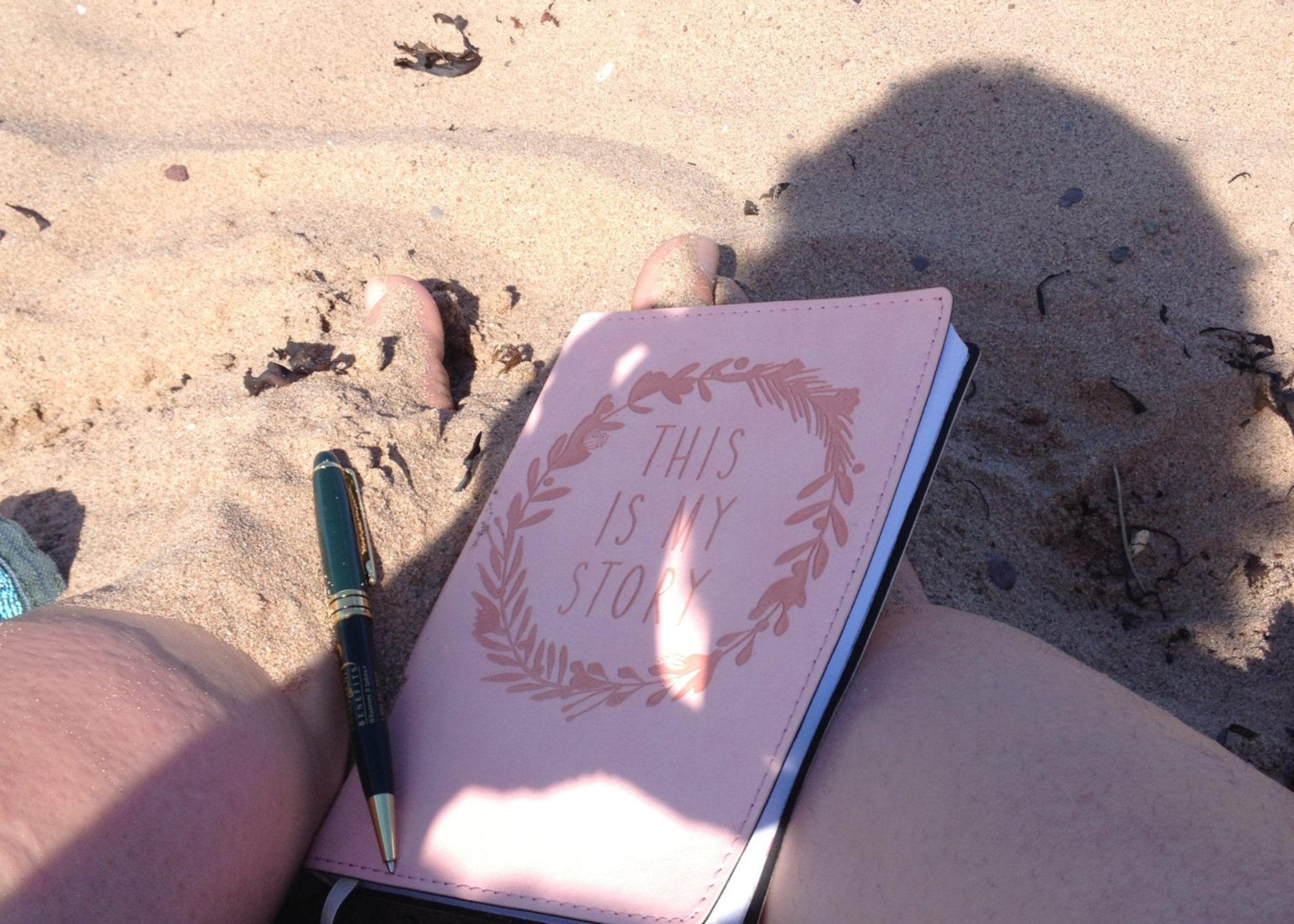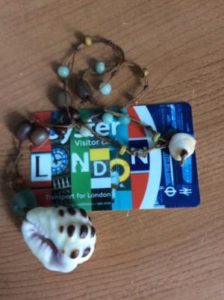You know those annyoing little barricade graphics that pop up when a website is Under Construction? There’s one on my company, my career, my life, orange cones everywhere. Icoudn’t be more lost. And I couldn’t be happier. There was a time when like a frantic driver late for work I cursed every cone as a delay, an obstacle, and sure-fire sign that the world hates me and you know what, I hate it right back. Now, I’m stopping, breathing, admiring its colour vivid through rain, snow and streaks of grime, marvelling at its posture amid wind, traffic, backhoes and threats. My life has been shattered, shifted and unearthed; I can rush to restore it, patting down the soil and filling in the cracks so all was as it once was, but I choose to embrace the chaos. I say “Yes!” to the mess, the uncertainty, the delays and diversions, for ultimately, they are the jounrey itself. The path I was on was the diversion, from the dismissed childhood, forgotten ancestors, overwhelming insights and intense feelings that to an awakening body feel like needles rather than tingles. Part of what was forgotten was my call to Renaissance and this week, it came flooding back in brilliant clarity, because a dam of fury melted, one I carried with piercing agony for years. I had no idea, but my body did.
At the time I steeped in the Hawaiian sun as a Rennaisance Woman in April 2016, I was supposed to be in Tuscany, the cradle of the historical Renaissance. I had been accepted into a two-week writing fellowship, and when I confirmed in October 2015 there was no doubt . But by November, my father’s health was declinining and for fear of being needed at home in the spring I deferred my placement. He passed in December, and the call to Hawaii came that winter. I did not give up Tuscany; I embraced the Renaissance in an invitation and place free of deadlines, schedules, routines and deliverables. It was a step to acknowledging that my writing was a part but not the whole, a conduit rather than shelter … steps that I continue to take slowly and painfully. Talents are so easily used as shields rather than invitations and explorations. Cracking the armour is done not only by a well-chosen word, but a well-placed one, visible to those who can support, challenge, fire up and cool down the energy needed to push through process and create. When that energy is blocked, the agony is intense, deep, and invisible, shutting down and isolating cells, tissue, entire chunks of your body from awareness and engagement.
And that’s what Tuscany had come from me. For to this land of beauty nd promise I attached values and judgements so ingrained I could do nothing for years but rage at the pain or shut it down.
Years before Renaissance Women or my fellowship, I dreamed of Tuscany. I have never been, nor had I considered going, but I awoke feeling both afire and grounded, as if the path to my more-connected self had been revealed. The visuals in my dream were vivid: greens richer than I had ever seen, scents of salt water and sun-baked earth, tastes of food fresh from the vine, but tthey paed to the sensations with which I was left: I could taste the music, touch the colour, see the passion, hear the growth. And above it all was the knoweldge within my body that I would not do this alone, that part of what made this experuence so fantastic is that I had soeone as awakened and engaged as I to share it, cell for cell, word for word, moment for moment.
My search then became fixated on the person. Who was he? Would he realize it? When would we go? When I was sure I had found him, I of course said nothing, not yet. I would let him reveal it to me. One day, he did, speaking of his desire to visit Tuscany, sampling Italian wine, trying out their style of cooking. Except he wasn’t doing it with me. He saw my dream, took it, and was trying to turn it into something it wasn’t. That was my story as my body filled with rage and I spewed flames of dismissal and criticism. How dare he. He reacted as I knew he would, defensively, diverting the conversation and seemingly dismissing my claim. That night, I packed away my books on Tuscany and vowed never to speak of it again until he came to his senses. My dream sat, a seething oozing mess of unowned beliefs and irritation, deep in my gut and over time I forgot about it. We maintainined our connection, he and I, but distant, as if engaged in swordplay, parrying and dodging, holding our ground but too shaky to advance.
Then came lunch last week. My body knew before I that there was a shift about to happen. Churning in my gut began late morning; by the time I sat in our booth, I could barely look at the menu for the nausea. I knew not of what was to come, but had learned enough to detach story from sensation. I sat with the queasiness, breathed, and allowed things to unfold. We chatted easily of work and his annual trip south. Then, like tossing a match to gasoline, he offered casually that he had two more trips on the books for this year: one west, and Tuscany.
I left my body in a whoosh of rage and agony. He was doing it again. My mood sank into the blackness, and my words and breath along with it. My dream was finally gone, torn from me and tossed aside, with me powerless to stop it.
Powerless. No, that’s not right. Get back here, in your body, right now.
I asked him about his trips. He started in about a recent work trip. I gently corrected him. Tuscany was something he wanted to do. It turns out the plans weren’t finalized, or even started. When you find out more about it, let me know, I hear myself ask him. He reacted with surprise but agreement. He turns to grab his notebook and with his attention diverted the words come easily: Tuscany was always something I believed you and I would do together.
And there it was. My truth. Out there, for him to dismiss, ridicule, deny … or perhaps accept. The turning point for me was that I didn’t care. I knew what I knew, and believed what I believed. In that moment, sharing it with no expectation, I confirmed my place in my own dream. His reaction would be his, and his dream. It could be different, it could be the same, but it was still his and mine. Another choice point woud be to make it ours but if that choice never came, I would still have mine.
Is that so? His reaction: equally calm and well-timed. I heard not surprise, but an invitation: tell me more.
I admitted I didn’t know why, just that I embraced Tuscany as a place of being rather than a place ‘to do’. I shared my awakening of the senses from my dream, and he agreed. It wasn’t about old buildings and dead people and art and crowds and traffic and sightseeing. It was the next level of being.
What we both didn’t say was that it was a place of being with each other. But again, I didn’t care. This was about me. His decision is about him.
If I am invited to go to Tuscany this fall, I will consider the opportunity.
If I am not and want to go, I will make it happen for myself. No longer is my dream, my happiness or my worth tied to him or anyone else.
There was my Renaissance moment. And in that moment I have never loved myself or him more. What was once a source of bitter disappointment was gratitude, for a presence in my life that allowed me to face, melt and process this festering pile of outmoded beliefs: I didn’t deserve Tuscany, I shouldn’t have feelings for someone else, I’m not able to do this alone. With this weight gone, I had room to breathe, to feel, and to turn around and see things from his perspective. Who wants to be in the presence of another when tasked with their happiness as well as yours? Who wants to feel as if they’ve crushed the world of another when only fulfilling what feels right in their own world? I was doing that, perhaps as the greatest diversion of all, for as my process continues I realize my self-sabotage runs far deeper than my intellect is aware. What I deeply want quickly becomes my nemesis, with civil war raging to both attain and destroy it.
I will see Tuscany some day but for now, the feeling I carry is far more enlightening than any view or setting could provide. I sit with my lawn under a foot of snow, sky grey, air damp …. but inside by being flows a sun-kissed emerald green that days after this encounter still warms and encourages.
This is the life I choose, and to which I say ‘Yes!’ Under Construction or In Progress may be applicable labels, and they are only labels, for months or years to come. So be it. What and who I am is in there, no expiry date. Yes.




